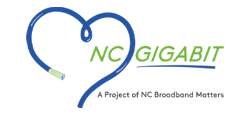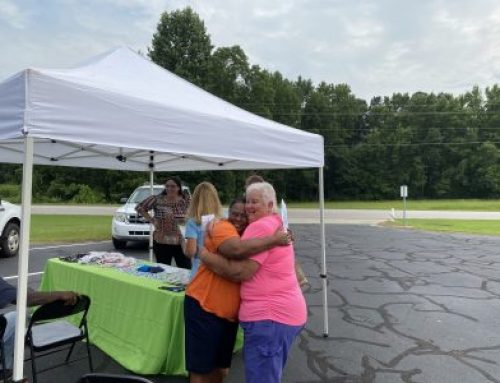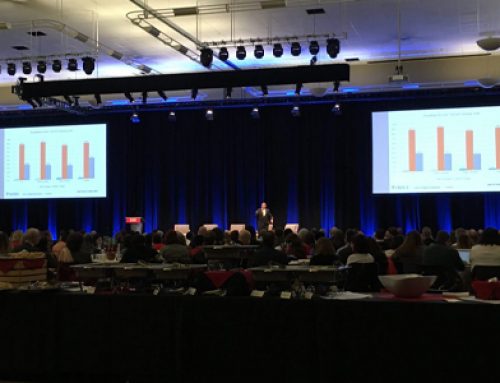This article originally appeared in the Summer 2018 issue of Skinny Wire, a publication of Walker and Associates.
Internet access is expected in public locations. I was standing in line at a Waxhaw, NC store yesterday and the woman in front of me was trying to pull up coupons on her phone. The cell coverage was poor and she was frustrated. The cashier told her about the free in-store Wi-Fi. The customer accessed Wi-Fi, retrieved the coupon, saved money, and the store generated goodwill and a positive customer experience. Has this happened to you?
This story is a small example of how Wi-Fi has become a resource in our communities. It is generally free for the user, low-cost to implement and support, offers strong coverage over a defined area, and is easy to access on any device by clicking on the SSID in the dropdown list. Other benefits include improving productivity (work from anywhere), access to education and healthcare resources, and helping to close the Digital Divide. This article provides 5 specific use cases for Public Wi-Fi:
School Wi-Fi zones
We’ve implemented Wi-Fi zones at Pfeiffer University in Stanly County, NC as well as high-speed wireless connectivity for the University of Mount Olive. In K-12, we are working with a South Carolina school district on Wi-Fi zones at two public schools. The district implemented a one-to-one program of devices to students, only to find that many students in that part of the district lack access to home broadband. By building an outdoor Wi-Fi zone around the school property students and parents have a safe location to access the internet after hours. Filtering is easily added to ensure a safe browsing experience.
School buses are now getting Wi-Fi as well. Google has been implementing “rolling study halls” in various locations in North Carolina (see article). This helps students maximize their learning time, giving them the ability to download critical information before arriving to what could be a home without broadband access.
Wi-Fi in public parks
Parks can be helpful in closing the Digital Divide. Free public Wi-Fi at a park is a location where students can access their assignments. It also provides a place where employees can access the internet on the lunch break and parents can access the internet while their children are on the playground. Parks are often used for festivals and other events. Public Wi-Fi allows vendors to connect to the internet for their booth, and it makes it easy for visitors to connect as well.
We are trialing free public Wi-Fi at Romare Bearden Park in Charlotte (SSID: “Open Charlotte”) focusing on the picnic table areas along Church street. It is a joint project with Packard Place, a large startup center located next door. Who doesn’t want to get out of the office and work outside on a nice day? The Bryan Multi-Sports Complex in Goldsboro, NC is another free public Wi-Fi park we’ve deployed.
Downtown Wi-Fi zones
One of the most requested services we hear from communities is a free public Wi-Fi zone downtown. It is used as an amenity for residents and tourists, and demonstrates that the town is forward-thinking and knows that residents expect internet connectivity wherever they go. North Carolina’s Broadband Infrastructure office wrote a good series of blog posts on the benefits of downtown Wi-Fi Zones. (Read more.) Wi-Fi can be used to connect devices as part of a smart city architecture.
We’ve implemented Wi-Fi in downtown Belmont, NC (SSID: “Open Belmont”) along north and south Main St. and into Stowe Park. A customized splash page advertises local merchants and has a link to the city calendar of events. Usage varies, but last weekend 640 unique devices registered on the system.
Belmont visitors and residents also enjoy free public Wi-Fi outside the new TechWorks innovation center, extending from the new brewery down to the Post Office parking lot. In Mount Olive, NC we deployed free public Wi-Fi up and down Center Street. In 2018, for the first time, visitors to the Mount Olive Pickle Festival has access to free internet.
Affordable Internet for public housing
Wi-Fi is a great solution for providing 100% coverage in a public housing development. In Charlotte, the Dillehay Courts neighborhood (consisting of 136 units) is getting broadband across the entire community through our Wi-Fi solution. Residents use a Wi-Fi enabled device to log into their community network and obtain free internet access. The Housing Authority and City cover the cost so there is no paperwork for residents, no individual billing, and no deposits or credit checks. Simply free internet for all.
Other options for low-income residents are available. Spectrum Assist and AT&T Access are low-cost internet solutions for those that qualify (typically SNAP guidelines). These programs are requirements as part of merger conditions for TWC and Direct TV respectively. There are consumer eligibility requirements and paperwork required, and as a result, many residents do not apply and miss out on a low-cost plan. Free public Wi-Fi reduces the friction to getting everyone online.
Retirement communities
Blanket Wi-Fi access across a retirement community provides the same benefits as it does in public housing; free internet access for everyone just by using the SSID. We are installing a wireless network for a retirement community in Salisbury that needed broadband for 125 apartments, 42 cottages, the administration building, and all the grounds. Wi-Fi is being used to provide an affordable solution that ensures 100% coverage that is easy to access.
Wait, won’t unlimited cellular data plans do away with the need for Wi-Fi?
In a word, no. Here’s why:
- The vast majority of laptops and tablets are not equipped with cellular data cards. These larger devices are needed to write research papers and to code software. A phone won’t cut it.
- Your smartphone can be used as a hotspot, but the “unlimited” data plans are only for phone data usage, not hot spot usage. This means hot spots have additional cost and throttled speeds, even on “unlimited” data plans. These plans are fairly expensive, and use as a hot spot drains your phone battery quickly.
- Coverage is better and speeds are faster in a good Wi-Fi zone.
Wi-Fi will be the most prevalent means to access the Internet
According to a report from Cisco, by 2021 50% of internet traffic will be Wi-Fi, 30% will be wired, and 20% will be mobile. This forecast is driven by businesses that are offering free Wi-Fi connection to their clients, and as in the story above, customers who leverage Wi-Fi while shopping. Most consumers with home broadband utilize Wi-Fi in their homes to access the internet.
Free public Wi-Fi connections at schools, libraries, parks, and downtown areas can be a solution for people who can’t afford home broadband connections and don’t want to go to McDonald’s. Digital Charlotte built a map of no-cost and low-cost public wireless networks access locations across Charlotte, NC. (You can access it here: https://digitalcharlotte.org/openwificlt/,) Wi-Fi is one of the best tools in addressing the digital divide. It is a low cost to implement, is easy for users to access, and can provide 100 percent coverage.
Measuring outcomes
Free public Wi-Fi has the visible benefits described above, but a greater value may lie in using data to measure outcomes. I don’t mean using data in the creepy, ad-following way like Facebook, but rather measuring how access to free internet leads to measurable improvements in education, jobs, and access to healthcare. Tracking Wi-Fi access can also measure how often a new greenway is utilized. Towns spend a lot of money building them, and knowing how they are being used is key to measuring the return on investment.
TAGS: public wi-fi





